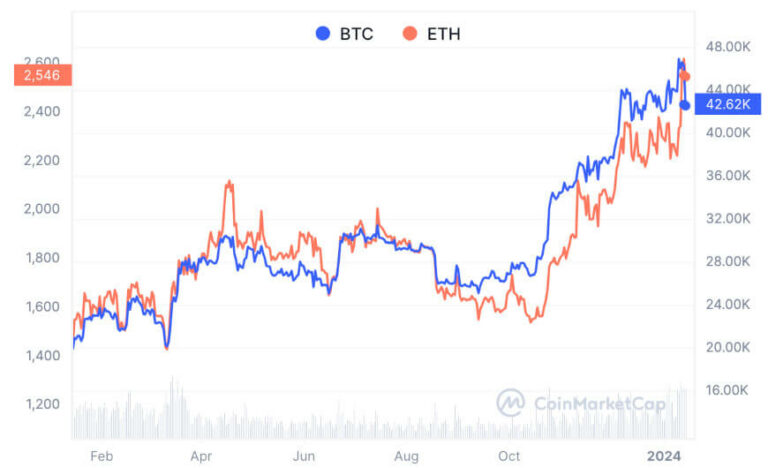Bitcoin Etfs Inflows Ethereum Etfs Outflows Trends And Impacts

Bitcoin ETFs inflows and Ethereum ETFs outflows are creating ripples in the cryptocurrency market, drawing attention from investors and analysts alike. As these financial products evolve, their inflows and outflows not only reflect investor sentiment but also significantly influence market dynamics. Understanding the nuances of these trends is crucial for anyone looking to navigate the complex landscape of cryptocurrency investments.
In this exploration, we will delve into the definitions and historical context of Bitcoin ETFs, assess the unique characteristics of Ethereum ETFs, and analyze their respective inflows and outflows. By examining these factors, we can better understand the implications for the broader market and what they mean for future investments in digital assets.
Understanding Bitcoin ETFs
Bitcoin Exchange-Traded Funds (ETFs) have emerged as a popular investment vehicle for both seasoned and new cryptocurrency investors. These funds allow investors to gain exposure to Bitcoin without the need to directly purchase and hold the digital asset. Instead, they trade on traditional stock exchanges, mirroring the price movements of Bitcoin itself.Bitcoin ETFs primarily function by holding Bitcoin as their underlying asset, giving investors a way to buy into Bitcoin exposure through conventional investment accounts.
Historical trends indicate a significant inflow of capital into Bitcoin ETFs since their inception, driven by increasing mainstream acceptance of cryptocurrencies and regulatory advancements. In jurisdictions like the United States, regulatory bodies have begun to approve Bitcoin ETFs, facilitating their growth. However, varying regulatory environments across countries can create disparities in how these funds operate globally.
Analyzing Ethereum ETFs
Ethereum ETFs offer a distinct investment opportunity compared to their Bitcoin counterparts. These funds primarily invest in Ethereum, the second-largest cryptocurrency by market capitalization. While both Bitcoin and Ethereum ETFs aim to provide exposure to their respective cryptocurrencies, they differ in terms of underlying technologies and market utilities.Recent trends have shown that Ethereum ETFs are experiencing outflows, contrasting the inflows seen in Bitcoin ETFs.
Statistics indicate that investor sentiment may be shifting, leading to a decline in interest in Ethereum-based funds. When analyzing performance over the last year, Bitcoin ETFs have generally outperformed Ethereum ETFs, raising questions about Ethereum’s market strength and appeal among investors.
Market Impact of Inflows and Outflows

The inflows into Bitcoin ETFs significantly impact the broader cryptocurrency market by driving up demand for Bitcoin. This increased demand often correlates with price surges, as institutional investors contribute substantial capital through these products. In contrast, the outflows from Ethereum ETFs can negatively affect investor sentiment, leading to increased volatility and price fluctuations for Ethereum.There exists a noteworthy correlation between the inflows and outflows of Bitcoin and Ethereum ETFs and the price movements of the underlying assets.
Market analysts often observe that substantial inflows into Bitcoin ETFs tend to coincide with rising Bitcoin prices, while significant outflows from Ethereum ETFs may lead to downward pressure on Ethereum’s market value.
Investment Strategies
For investors looking to navigate the Bitcoin ETF landscape, a framework based on inflow data can be beneficial. Monitoring inflow trends helps investors gauge market sentiment and make informed decisions about timing their investments. A suggested strategy might include:
- Regularly analyzing inflow data and comparing it to historical trends.
- Setting alerts for significant shifts in inflow volume to capture market opportunities.
- Diversifying investments between Bitcoin ETFs and other assets to mitigate risk.
When it comes to managing investments in Ethereum ETFs, understanding outflow trends becomes paramount. A tactical approach could involve:
- Analyzing the reasons behind outflows and adjusting investment positions accordingly.
- Utilizing technical analysis to identify potential reversal points in Ethereum’s price.
- Staying updated on market news and developments that could affect Ethereum ETFs.
Timing is crucial; therefore, employing methods to analyze inflows and outflows can enhance trading decisions. Utilizing real-time data and historical patterns equips investors to respond proactively to market changes.
Future Trends and Predictions

Looking ahead, it is anticipated that Bitcoin ETFs will continue to see strong inflows in the next fiscal year, driven by increasing institutional adoption and favorable regulatory developments. This trend is likely to be supported by ongoing efforts to integrate Bitcoin into traditional financial systems.On the other hand, Ethereum ETFs may face predicted outflows stemming from market conditions such as heightened competition from other blockchain projects and regulatory uncertainties that could deter investment.
The potential impact of upcoming regulations is substantial, as new frameworks could either facilitate further inflows into Bitcoin ETFs or exacerbate the challenges faced by Ethereum ETFs.
Case Studies
Examining case studies of significant Bitcoin ETF inflows reveals their profound effects on market dynamics. For instance, when a major Bitcoin ETF was approved, it led to a surge in Bitcoin prices, demonstrating the direct influence of institutional investment on market valuation.Conversely, case studies of Ethereum ETF outflows illustrate the resulting investor reactions. When a notable outflow was announced, many investors reacted by liquidating their positions, further exacerbating downward price movements and leading to increased volatility in the Ethereum market.Comparing these case studies highlights crucial factors that drive inflow and outflow patterns, including market sentiment, regulatory news, and technological advancements within the respective blockchain ecosystems.
Understanding these dynamics is essential for investors aiming to navigate the complexities of cryptocurrency ETFs.
Final Summary

In conclusion, the interplay between Bitcoin ETFs inflows and Ethereum ETFs outflows serves as a barometer for market health and investor confidence. As we anticipate future trends and regulatory changes, staying informed will empower investors to make strategic decisions in a rapidly evolving environment. Ultimately, understanding these movements could unlock new opportunities in the cryptocurrency space.
Questions and Answers
What are Bitcoin ETFs?
Bitcoin ETFs are exchange-traded funds that invest in Bitcoin, allowing investors to gain exposure to the cryptocurrency without owning it directly.
How do Bitcoin ETFs inflows affect the market?
Increased inflows into Bitcoin ETFs can indicate growing investor confidence and lead to a rise in Bitcoin prices, impacting overall market sentiment.
What is the difference between Bitcoin and Ethereum ETFs?
Bitcoin ETFs focus on Bitcoin as the underlying asset, while Ethereum ETFs invest in Ethereum, each reflecting different trends and investor interests.
Why are Ethereum ETFs experiencing outflows?
Ethereum ETFs may experience outflows due to market volatility, changing investor sentiment, or regulatory concerns affecting demand.
What role do regulations play in ETF inflows and outflows?
Regulatory developments can significantly impact investor confidence and market stability, influencing the inflow and outflow trends of both Bitcoin and Ethereum ETFs.





